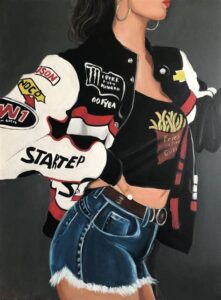Martin Scorsese, one of the greatest filmmakers in cinematic history, has never been shy about sharing his admiration for other directors and their masterpieces. Known for classics like Goodfellas, Taxi Driver, and The Irishman, Scorsese is a master at crafting intricate narratives, unforgettable characters, and visual storytelling that lingers in the mind long after the credits roll. Yet, even the greats recognize their limits.
Scorsese once candidly admitted that there’s a film he felt he could never surpass—a towering cinematic achievement so masterful that he knew it was best left untouched. The movie? Michael Powell and Emeric Pressburger’s The Red Shoes (1948). Reflecting on its brilliance, Scorsese declared, “You can’t go near that.” This editorial delves into why The Red Shoes left such an indelible mark on Scorsese, the impression it has had on cinema, and how it reflects broader themes in the art of storytelling.
A Glimpse at The Red Shoes
Released in 1948, The Red Shoes is a visually stunning ballet film directed by Michael Powell and Emeric Pressburger, often hailed as their magnum opus. Loosely based on Hans Christian Andersen’s fairy tale, the film tells the story of a young ballerina, Vicky Page (Moira Shearer), who is torn between her love for a composer, Julian Craster (Marius Goring), and her devotion to dance under the obsessive guidance of impresario Boris Lermontov (Anton Walbrook).
The Central Conflict
The film revolves around a harrowing choice: the pursuit of artistic perfection or the desire for personal happiness. This central conflict resonates with anyone who has struggled with balancing ambition and relationships, making it universally relatable despite its specific setting.
The Ballet Sequence
At the heart of the film is the breathtaking 17-minute ballet sequence, a surreal, dreamlike portrayal of The Red Shoes ballet itself. This scene, with its groundbreaking use of visual effects, color, and choreography, has been praised as one of the most significant achievements in cinematic history.
Themes of Obsession and Sacrifice
The Red Shoes is an exploration of the cost of artistic obsession—a theme that Scorsese has often grappled with in his own work. It portrays art as an all-consuming force, one that demands complete devotion, often at great personal cost.
Why Scorsese Reveres The Red Shoes
For Martin Scorsese, The Red Shoes is more than a film; it is an emotional and visual touchstone that shaped his understanding of what cinema could achieve. Here’s why Scorsese believes it’s untouchable:
A Masterclass in Visual Storytelling
Scorsese has always been a champion of visual storytelling, and The Red Shoes exemplifies this art form. Powell and Pressburger used the newly developed Technicolor process to create a world of vibrant, almost surreal colors that elevated the narrative.
•Color as Emotion: The film’s use of color isn’t just decorative; it’s expressive, reflecting the characters’ inner turmoil and desires. For example, the vivid red of the ballet shoes becomes a symbol of both ambition and entrapment.
•Influence on Scorsese: Scorsese’s own films, such as Taxi Driver and The Age of Innocence, showcase a similar understanding of how color can evoke mood and emotion.
The Ballet Sequence: A Perfect Marriage of Art and Cinema
The 17-minute ballet sequence is a tour de force that merges cinema and dance into a singular artistic vision. Scorsese has often cited this scene as a benchmark for integrating music, movement, and visual effects.
•Transcending Realism: The sequence shifts from realism to fantasy, creating an immersive experience that blurs the lines between Vicky’s reality and the story of The Red Shoes. This blending of worlds inspired Scorsese’s work in films like The Last Temptation of Christ and Shutter Island, where dreams and reality collide.
•Crafting the Unattainable: Scorsese admitted that such a sequence is nearly impossible to replicate, calling it a perfect blend of all cinematic elements.
Themes That Resonate Deeply with Scorsese
The themes of The Red Shoes—obsession, sacrifice, and the cost of artistic dedication—mirror the struggles that Scorsese has explored throughout his career.
•Obsession with Perfection: Scorsese’s characters often grapple with their own obsessions, from Jake LaMotta in Raging Bull to Howard Hughes in The Aviator. These characters’ all-consuming passions echo Vicky Page’s plight.
•The Duality of Art and Life: Like Lermontov, Scorsese has often examined the tension between personal relationships and artistic ambition. His films repeatedly ask: What price are we willing to pay for greatness?
The Influence of The Red Shoes on Scorsese’s Work
While Scorsese has stated that The Red Shoes is a film he could never beat, its influence is undeniable in his own body of work.
Technicolor Inspiration
Scorsese has credited The Red Shoes for inspiring his love of Technicolor, which he used to stunning effect in The Aviator. The vibrant palette of The Red Shoes informed his decision to replicate the look of early Technicolor films during Howard Hughes’ golden years.
Thematic Parallels
The recurring themes of obsession and sacrifice in Scorsese’s films owe a debt to The Red Shoes. For example:
•Raging Bull: Jake LaMotta’s descent into self-destruction parallels Vicky Page’s inability to balance art and life.
•The Irishman: The cost of ambition and betrayal in Frank Sheeran’s life reflects the sacrifices made in pursuit of a singular goal.
Pushing Cinematic Boundaries
Scorsese’s own filmmaking style—his willingness to experiment with narrative structures, visual effects, and non-linear storytelling—echoes the innovative spirit of Powell and Pressburger.
A Universal Masterpiece
While Scorsese’s admiration for The Red Shoes is deeply personal, it’s a sentiment shared by filmmakers and critics worldwide. Here’s why the film continues to resonate:
Ahead of Its Time
The Red Shoes was revolutionary in its use of color, special effects, and narrative complexity. It set a standard for films that aim to merge art forms into a cohesive whole.
A Timeless Tale
The central conflict—between personal happiness and professional ambition—remains as relevant today as it was in 1948. This universal theme ensures the film’s lasting appeal.
Inspiring Generations of Filmmakers
Beyond Scorsese, The Red Shoes has influenced directors such as Francis Ford Coppola, Guillermo del Toro, and Darren Aronofsky, whose Black Swan is often considered a modern homage.
Why “You Can’t Go Near That” Matters
Scorsese’s declaration, “You can’t go near that,” is more than just an admission of respect for The Red Shoes. It’s a recognition of the profound emotional and artistic impact a truly great film can have. It’s also a testament to the humility of an artist who, despite his own towering achievements, remains in awe of the magic of cinema.
A Lesson in Artistic Reverence
Scorsese’s reverence for The Red Shoes reminds us that even the most accomplished creators draw inspiration from others. It’s a humbling acknowledgment of the collaborative and interdependent nature of art.
Final Thoughts
For Martin Scorsese, The Red Shoes isn’t just a film—it’s a touchstone that represents the pinnacle of cinematic artistry. Its influence can be seen not only in his own work but in the broader landscape of film. Scorsese’s candid admission that he could never surpass its brilliance is a tribute to the enduring power of Michael Powell and Emeric Pressburger’s masterpiece.
The Red Shoes remains a testament to what cinema can achieve when storytelling, visuals, and music come together in perfect harmony. And in recognizing its greatness, Scorsese reaffirms his own deep love for the art form, reminding us why he—and The Red Shoes—will forever be icons of filmmaking.
No comments yet.








